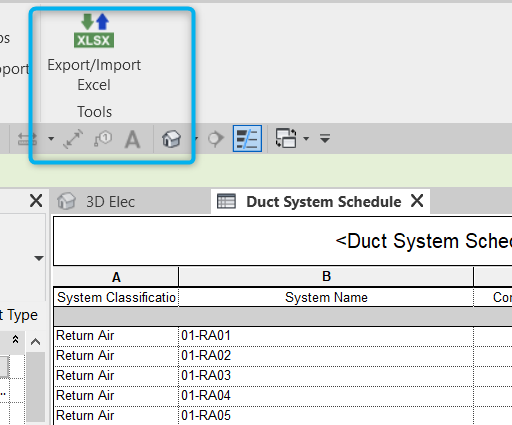Revit Tools for each Job: Your Ultimate Layout Companion
Wiki Article
Revit Accelerator: Excel Assimilation Strategies for Boosting Productivity and Cooperation
In this write-up, we will check out the benefits of incorporating Excel into your Revit operations. Plus, we will share ideal practices for seamlessly integrating Excel right into your Revit projects. Get ready to supercharge your Revit experience with our Revit Accelerator: Excel Combination Approaches!Advantages of Excel Assimilation in Revit
The advantages of Excel combination in Revit are various and can significantly enhance productivity and collaboration. By perfectly attaching these two powerful devices, you can simplify your workflow and save useful time. With Excel assimilation, you can quickly import and export data between Revit and Excel, allowing you to utilize the toughness of both programs.
An additional advantage of Excel combination is the capacity to produce dynamic routines and reports. By linking your Revit version to an Excel spread sheet, any modifications made in Revit will instantly upgrade in the matching Excel documents. This makes it simple to generate current timetables, quantity departures, and various other project documentation.
Excel integration in Revit likewise enables better cooperation amongst group participants. With the ability to import and export data, you can conveniently share info with coworkers who may not have access to Revit. This promotes effective communication and permits for better sychronisation and decision-making.
Improving Operations With Revit and Excel
Simplifying process with Revit and Excel can substantially improve efficiency and partnership. By incorporating these two effective devices, you can enhance your design process and boost communication within your group. With Revit, you can produce 3D versions and produce comprehensive building and engineering documentation. When it comes to data administration and analysis, Excel is the go-to software application. By integrating the capabilities of Revit and Excel, you can flawlessly transfer information in between both applications, eliminating the need for manual information entrance and lowering the danger of errors.
Making Use Of Revit and Excel together permits you to leverage the staminas of each program - revit tool. You can export data from Revit right into Excel, where you can do intricate estimations, create graphs and graphes, and analyze the details in a more organized and efficient way. On the other hand, you can import data from Excel into Revit, allowing you to quickly update your models and documents based on changes made in Excel
The assimilation of Revit and Excel additionally advertises collaboration amongst employee. By sharing Excel data, you can conveniently connect and work together on layout and construction-related data. This enhances control and guarantees that everybody is functioning with the most current details.
Optimizing Cooperation With Excel and Revit
To take full advantage of partnership with Excel and Revit, you can perfectly share and update design and construction-related data with your group. With simply a few clicks, you can import Excel spreadsheets right into your Revit model, enabling you to easily accessibility and adjust the information.One of the crucial advantages of using Excel in conjunction with Revit is the capacity to upgrade data in both programs concurrently. Any type of changes made in Excel will instantly be shown in Revit, and the other way around. This guarantees that everybody is collaborating with one of the most up-to-date info, preventing complication and conserving important time.
Additionally, Excel gives powerful devices for analyzing and arranging information, which can considerably enhance your partnership initiatives. You can produce custom-made records and charts in Excel, helping you to imagine and interact essential job info efficiently. When providing information to stakeholders or making informed decisions based on job metrics (revit tools)., this can be especially valuable.
Advanced Techniques for Boosting Efficiency in Revit Making Use Of Excel
By making use of innovative methods in Revit, you can significantly enhance your productivity by leveraging revit tools the power of Excel. One of the crucial approaches for enhancing performance is by utilizing Excel as a data management device. With Revit's Excel assimilation function, you can link Excel spreadsheets straight to your Revit version, permitting you to conveniently handle and update data. This assimilation allows you to create timetables, compute quantities, and execute data analysis effectively.
Additionally, you can make use of Excel macros to automate repetitive jobs in Revit (revit plugins). Macros enable you to videotape a series of activities and play them back with a single click, saving you time and effort. For instance, you can produce a macro to instantly generate space schedules or upgrade criterion worths in mass.
Finest Practices for Excel Assimilation in Revit
Making Use Of Excel as an information monitoring device in Revit enables for efficient management and upgrading of data. One of the ideal techniques for Excel assimilation in Revit is to create a clear and organized data framework. By adhering to these best practices, you can properly utilize Excel as a data administration device in Revit and boost your efficiency and cooperation.Verdict
In final thought, incorporating Excel with Revit can significantly improve productivity and cooperation in the design procedure. By leveraging the power of Excel, Revit customers can achieve higher degrees of productivity and cooperation in their jobs.With Excel assimilation, you can easily import and export information in between Revit and Excel, allowing you to leverage the staminas of both programs.
One of the vital benefits of Excel assimilation is the ability to utilize Excel solutions and features within Revit. By connecting your Revit model to an Excel spread sheet, any type of adjustments made in Revit will automatically update in the equivalent Excel documents. On the various other hand, you can import information from Excel right into Revit, enabling you to promptly upgrade your models and documents based on changes made in Excel.
With Revit's Excel integration function, you can link Excel spreadsheets straight to your Revit model, enabling you to quickly handle and update data.
Report this wiki page